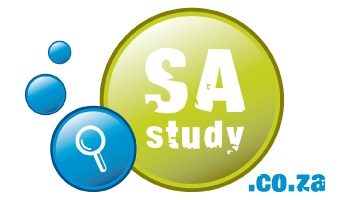The matric class of 2010 have shrugged off setbacks from a month-long Soccer World Cup break and a teacher strike to record a surprising rise in the national pass rate.
Basic Education Minister Angie Motshekga said that 2010 had been an “extraordinary year” for matriculants with the pass rate rising from 60,7% in 2009 to 67,8%.
* Read the government’s report on the National Senior Certificate examinations
* IEB microsite with all the results, a range of study options and profiles of the top schools and students.
“2010 was an extraordinary year not only because of the World Cup but because of the matric pass rate … It is a true reflection of learner achievement,” Motshekga said after announcing the results in Pretoria.
“The class of 2010 are simply distinctive … the World Cup was not a disruption. It motivated schools, parents, and officials to go the extra mile,
“I take my hat off to the class of 2010.”
Motshekga said it was possible that the 2010 public-sector strike might have robbed the department of its targeted 70% pass rate. The department had aimed for a pass rate of 70% for 2010 and a 10% improvement by 2014.
She noted that the exams went smoothly, unlike in 2009 when results were marred by examination paper leaks in Mpumalanga.
The department had worked consistently to ensure the credibility of the exams and its results. The process of checking exam results was conducted fairly, she said.
‘No turning back now’
She said the improved pass rate had to be sustained.
“There is no turning back now. The increase is a significant achievement we can write home about and be proud of.”
However, there were still many schools below the national benchmark which needed attention and support.
“We will work closely to make sure they reach that national benchmark.”
Motshekga said teacher development would be intensified in 2011 and that more staff would be recruited to make progress in all spheres of education and to improve functionality at schools.
The department would concentrate on school infrastructure because it affected teaching and learning.
Libraries would be rehabilitated and sanitation, security and water supply problems would be addressed.
She said provinces had committed themselves to prioritising budgets.
The department also planned to ensure that all pupils between Grade 10 and 12 had textbooks in all major subjects in 2011.
President Jacob Zuma said the improved results were “exciting” for South Africa and indicated the government was on the right track.
“It is an exciting day for government and for the nation,” Zuma said in a statement.
“Education is an apex priority of government and we are determined to continue investing a lot of time, money and other resources to it.”
DA MP Wilmot James said the rise in the rate was encouraging and “hopefully” the beginning of a more positive trend in South African education.
Positive trend
“The fact that nearly 30 000 additional students received matric passes this year is an encouraging development, and we can only hope that this represents the beginning of a more positive trend in South African education in the years to come,” said James, who sits on Parliament’s committee for basic education.
ANC spokesperson Jackson Mthembu said pupils and teachers had gone the extra mile to make up for lost time despite disruptions and difficulties in 2010.
“Our gratitude also goes to those who volunteered during those difficult times to give our learners tuition without any compensation from our government and parents,” he said.
The chief rirector of exams Nkosinathi Sishi said in Pretoria that 364 513 pupils had passed the exams.
There were 643 546 candidates who sat for the exams of whom 537 543 wrote all seven subjects. Of those 23,5% obtained university entrance, up from 19,9%.
There were 18 schools where no pupils passed and 504 schools that achieved a 100% pass rate.
In 2009, 60,7% of matrics passed the 2009 exams, which was just under 2% down from 2008.
In 2008, 62,5% of matrics passed.
Gauteng takes top honours
Gauteng was the top province with a 78,6% pass rate, followed by the Western Cape which achieved 76,8%, Motshekga said.
This was followed by the Northern Cape with 72,3% — the biggest improvement by a province. In 2009 the Northern Cape had a 61,3 % pass rate.
KwaZulu-Natal and the Free State each had a pass rate of 70,7%.
The Eastern Cape had a 58,3% pass rate followed by Limpopo and Mpumulanga which had 57,9%% and 56,8% respectively.
Gauteng also led with the number of pupils who obtained university entrance at 33,9%.
It was followed by the Western Cape with 31,5%.
Some 2 142 schools obtained a pass rate of between 80 and 100%, while 1 848 obtained a pass rate of between 60 percent and 79,9%.
Some 1 510 schools obtained a pass rate of between 40 and 60%, and 844 schools had a pass rate of between 20 and 40%.
Some 172 obtained a pass rate of 20% or less.
The SA Democratic Teachers’ Union (Sadtu) said it was encouraged by an increase in the number of learners who wrote the examination. – Sapa
Article by Mail & Guardian
